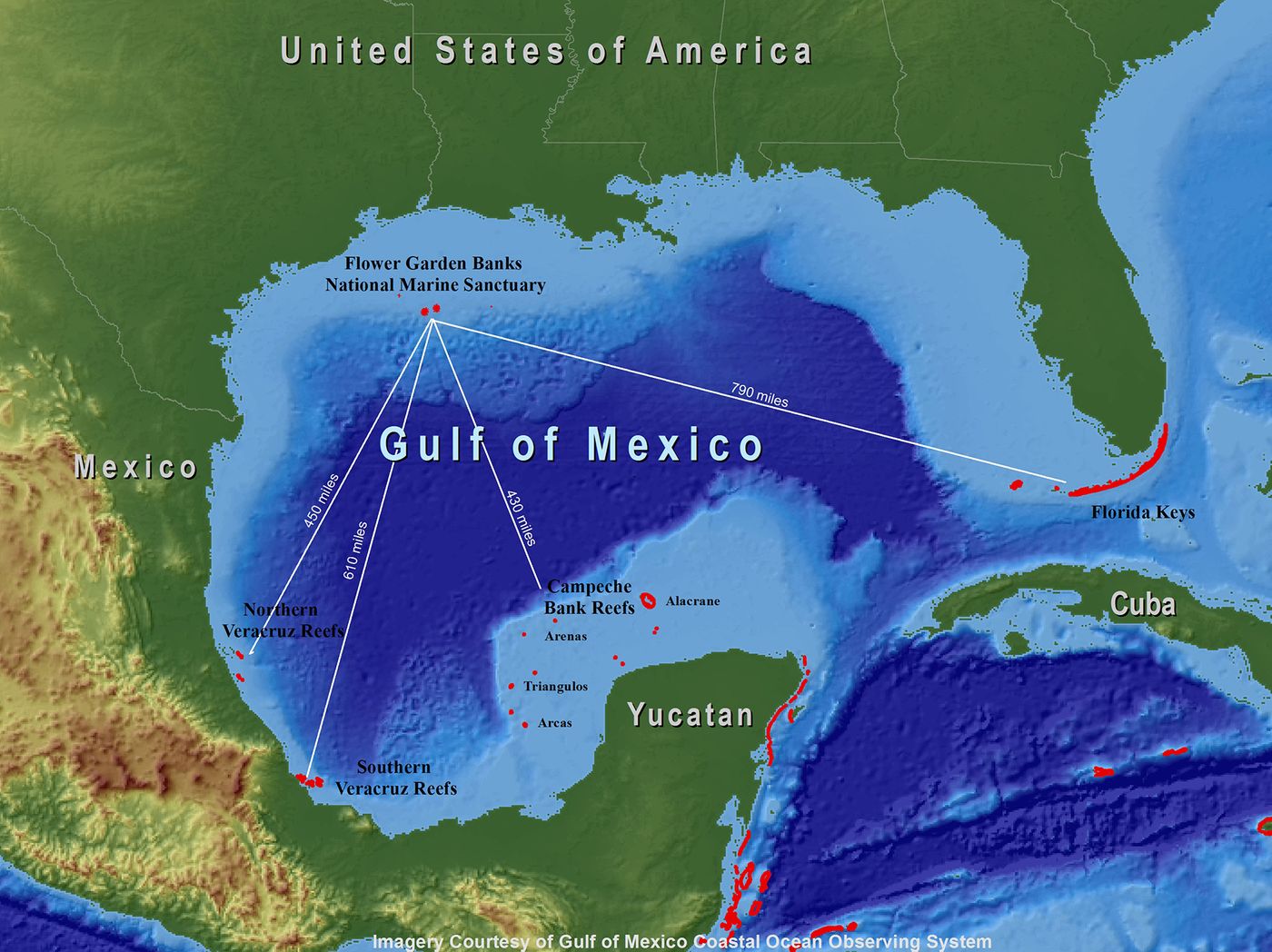Coral reefs in the Gulf of Mexico plundered by run-off from Harvey
We are only just starting to understand the impacts of the hurricanes that plundered the southern United States and Puerto Rico in the last two months. A recent study from scientists at Rice University shows that the intense flooding that came with Harvey left its mark on more than just Houston’s infrastructure and families – 13 trillion gallons of floodwater that erupted into the Gulf of Mexico as a result of the flooding now pose a hazard to fragile coral reefs.
The Flower Garden Banks National Marine Sanctuary, which lies about 100 miles offshore of Galveston, was inundated with so much freshwater that the salinity of the ocean dropped, according to data collected by the Texas Automated Buoy System. The system, which is run by the Geochemical and Environmental Research Group (GERG) at Texas A&M University, is a network of buoys that monitor the waters off the Texas coast and relay real-time ocean data, such as ocean pH, temperature, and turbidity.
"The salinity at one buoy on the reef dropped from 36 to 32 on September 28, but it rebounded to 36 by October 4, and it has been between 35 and 36 since then," said Rice marine biologist Adrienne Correa. That’s a 10% drop in salinity – an awful lot for sensitive marine organisms. "We don't yet know what impact the low salinity had on the reef while it was there."
"When people look at the impact of hurricanes on coral reefs, they often look at physical damage or breakage of reef frameworks by waves and storm surge," Correa said. "Much less is known about the impacts of freshwater influx from the precipitation associated with a hurricane."
Correa and colleagues expressed the hope that the plume will spare some of the most fragile coral reefs. She says reefs may be lucky if currents cooperate. Nevertheless, it is likely that many reefs will still be affected, even if indirectly.
Coral reefs are critical habitat for a vast biodiversity of marine life, from fish to turtles to sharks. Damaged reefs upset entire ecosystems, and can also leave coastlines more vulnerable to hurricanes and storm surges.
Sources: Science Daily, UPI









